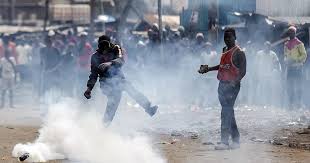Early in the morning on Tuesday May 2, 2023, news trending on social media was the gunning down of Minister of State for Labour, Employment and Industrial Relations, Col. (Rtd) Hon. Charles Okello Engola Macodwogo (R.I.P) by his bodyguard, Private Wilson Sabiiti from his home in Kyanja, Kampala. Ten days later, Police Constable, Ivan Wabwire shot and killed an Indian money lender, Uttam Bhandari at Raja Chambers, along Parliament Avenue, Kampala.
The month of May was awash with news of gun violence. Daily Monitor’s, Andrew Bagala in one of his investigative stories in May calculated that on average, there was a fatal gunshot victim every 48 hours in Kampala and elsewhere. In 2022, the Police crime report indicated 13 people killed by security personnel from the army, Police, Prisons and private security organizations. However, between May and mid-June this year, security personnel had killed 15 people. The sad incident appears to have inspired some security personnel to act unprofessionally, leading to a rise in gun violence as a result of what some security analysts have termed “copy cut effect”.
The Intergovernmental Regional Centre for Small Arms and Light Weapons Report, 2016 ranked Uganda with the highest rate of gun violence in East Africa. The national army, Uganda People’s Defense Forces (UPDF) has been implicated in some instances, especially, during disarmament exercises in Karamoja region. Human Rights Watch (HRW) in 2006 released a report titled “Get the Gun!” detailing gun violence and human rights abuses inflicted on the people of Karamoja at the time. Likewise, on June 29, 2023, Daily Monitor published a prime story; ‘Army, Police kill one Karimojong each day’ showing that gun violence in the region is still a big problem despite disarmament over the years.
Some regions of the country which are recovering from war, instability, particularly, Northern Uganda and West Nile have high incidents of gun violence. Also, districts bordering the Democratic Republic of Congo and South Sudan continue to experience a high rate of gun violence as a result of insecurity. The recent attack on Lhubiriha secondary school in Kasese, where close to 40 people were killed shows the extent of gun violence and that safety from attacks across borders is not guaranteed. Moreover, reports of South Sudanese soldiers and militias attacking Ugandans in Nimule and Lamwo districts are not uncommon.
In some instances, the murder of Senior Principal State Attorney, Joan Kagezi, Hon. Ibrahim Abiriga, Assistant Inspector of Police (AIGP) Andrew Felix Kaweesi to mention but a few shocked the nation. After these incidences, the President of Uganda, His Excellency, Yoweri Kagutta Museveni proposed that all guns be finger printed as a measure to contain the alarming increase and wave of gun violence. In the earlier years of his administration, Mr. Museveni’s main message was that of the demystification of the gun. Probably, this can be attributed to the gun violence being witnessed today. Although most incidents of gun violence are being perpetuated by poorly trained security guards and indisciplined military personnel, there are occasional cases of aggravated robberies and poverty being major factors to the rampant gun violence in the country. Besides, most Ugandans with firearms have not undergone psychiatric tests to ascertain eligibility to have them. Therefore, provision of better mental health care and service to soldiers and security personnel, coupled with prompt payment of salaries would significantly reduce incidents of gun violence in the country
















